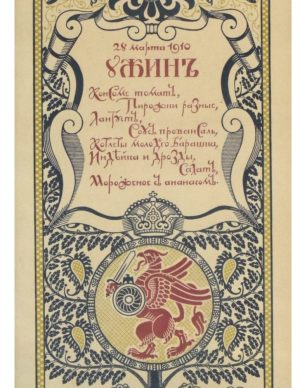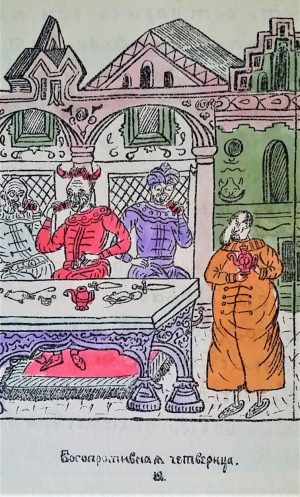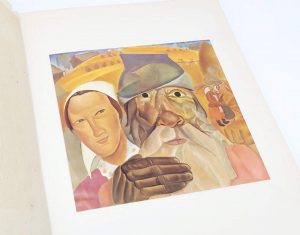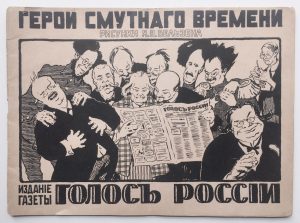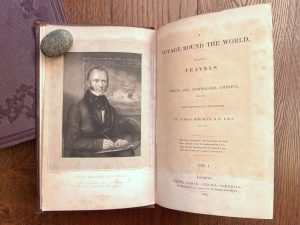Our Notes & References
Very rare and decorative imperial menu by “one of the greatest masters of the Russian romantic Art Nouveau style” (Maksakova). We could not trace any example in the great Russian libraries or museums, nor in WorldCat.
Held on Sunday, March 28, 1910 in the imperial residence of Tsarskoe Selo, this festive dinner was commemorating the creation of His Imperial Majesty’s Own Joined Infantry Regiment [Sobstvennyi Ego Imperatorskogo Velichestva Svodnyi Pekhotnyi Polk], 29 years earlier. Tsar Nicholas II wrote in his diary on that day: “at 11 o’clock I went with Dmitrii to the manège to the feast of the Joined Infantry Regiment. It presented itself in full, 8 units – splendid. Had breakfast in the Round Hall with the officers, their wives and those who had served before. Mum was there also and left at 6 o’clock […] At 11 I went to dinner at the Joined Regiment. After that Plevitskaia sang Russian songs, which I liked very much. The Romanians led by Leonardi played during the interval. But the singer had the greatest success. I returned home at about 6 o’clock”.
On the menu for the tsar: “tomato consommé, various pies, lobster, sauce provençale, cutlets of young lamb, turkey and thrushes, salad, ice cream with pineapple”.
A leading member of the important ‘World of Art’ [Mir Iskusstva] group, the then already famous artist Bilibin (1876-1942) chose to depict the Russian imperial double-headed eagle soaring above a vast oak tree — a symbol of royal power and strength — supported by two lions. In the middle of the tree is a roundel with an eagle holding a sword and shield. The entire composition is rendered in tricolour of the Russian imperial flag — black, yellow and white, with touches of red for the menu text, the coat of arms with Saint George on the imperial eagle’s chest, and the militant eagle in the roundel. The decorative style is reminiscent of Russian popular lubok prints and Nordic-Carolingian bestial imagery, while the intensity of the rich composition is representative of Bilibin’s style.
This seems to be the earliest of three menus designed by Bilibin: we could indeed trace two other menus by him, one in 1912 and the other, more common, in 1913 for the celebrations of the 300-y. reign of the Romanovs. (Unlike ours, we could trace these menus in the collections of the greatest Russian museums.) It is also interesting to note that our design was reused three years later for a charity concert programme held in Yalta on 24 September 1913.
By 1910 Ivan Bilibin had already become prominent for his colourful illustrations to Russian fairy tales and theatrical decorations, all executed in a highly ornamental manner inspired by folk and mediaeval art he viewed during his ethnographic expeditions to the Russian North. After the Revolution, Bilibin lived in exile for many years, and returned to his homeland in 1936; he died during the siege of Leningrad in February 1942.
Bibliography
Maksakova M. M., “Skazochnyi mir Ivana Bilibina”, Komissiia po delam Rossiiskoi Federatsii UNESCO.
Mironenko S. V., Dnevniki Imperatora Nikolaia II, Rosspen, Moskva, 2013.
Physical Description
Chromolithographed narrow broadside (49.5 x 19.5 cm).
Binding
Kept in a later glazed frame.
Condition
In fine condition, with just some light toning and creases.









